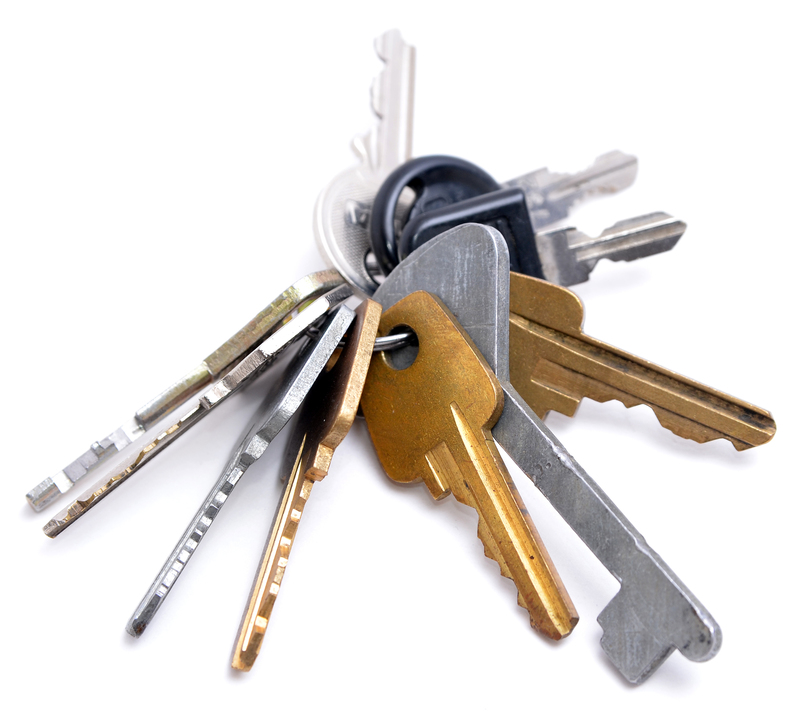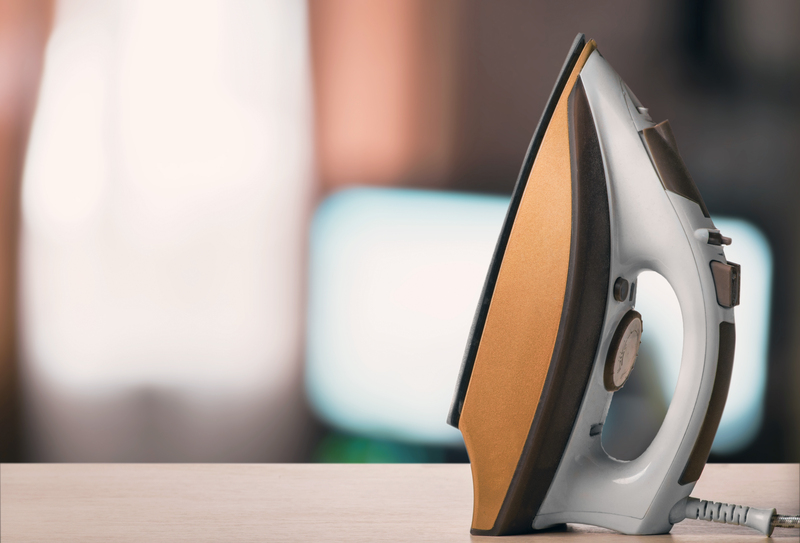Revitalize Your Stovetop by Removing Burnt-on Residue
Posted on 30/05/2025
Revitalize Your Stovetop by Removing Burnt-on Residue: A Comprehensive Guide
Has your once-shiny stovetop become a magnet for burnt residue, stubborn stains, and grimy build-up? If you long to restore its original sparkle and keep your kitchen feeling fresh, you're not alone. In this thorough guide, you'll discover the most effective methods to remove burnt-on residue from your stovetop, ensuring it looks as good as new. Say goodbye to caked-on grease and hello to a pristine stove with these expert tips!

Understanding the Challenge of Burnt-on Stovetop Residue
Repeated cooking can leave behind spills, splatters, and burnt-on debris. Over time, this burnt residue not only detracts from your kitchen's appearance but can also affect appliance performance and hygiene. Whether your stovetop is glass, ceramic, stainless steel, or traditional coil, knowing how to properly remove stubborn stains from your stovetop is crucial for both aesthetics and functionality.
Why Does Burnt-on Residue Form?
- Spills that aren't cleaned immediately can harden, making them tough to remove later.
- High heat causes food and sauces to carbonize and stick to surface material.
- Repeated use without thorough cleaning compounds buildup, resulting in black marks, discoloration, and crusts.
- Certain cookware--especially when over-boiled--can contribute to ring stains or melted material.
Ignoring this gunk can cause permanent stains and even surface damage. The good news? You can easily revitalize your stovetop by following some tried-and-true cleaning methods.
How to Remove Burnt-on Residue from Your Stovetop: Step-by-Step Solutions
Step 1: Safety First--Preparation Matters
- Turn off and unplug (if applicable) your stovetop. Ensure burners are cool before starting.
- Read the manufacturer's manual for surface-specific care instructions.
- Gather cleaning supplies: Baking soda, vinegar, dish soap, hot water, non-abrasive sponges, microfiber cloths, plastic scraper, gloves.
Step 2: Choose the Right Cleaning Method for Your Stovetop Surface
Different stovetop materials require different cleaning approaches to avoid damage. Here's a breakdown:
Glass or Ceramic Stovetops
- Wipe loose debris: Use a dry microfiber cloth to remove crumbs or loose dirt.
- Apply baking soda: Sprinkle a generous layer of baking soda on burnt spots.
- Saturate with vinegar: Spray or pour white vinegar onto the baking soda; it will fizz and help lift residue.
- Let sit: Allow the mixture to rest for at least 15 minutes.
- Gently scrub: Use a non-abrasive soft sponge or cloth in a circular motion. For tougher areas, use a plastic scraper at a low angle.
- Wipe clean with a damp microfiber cloth, then buff dry for shine.
Stainless Steel Stovetops
- Mix dish soap in hot water and dip a sponge into the solution.
- Scrub gently in the direction of the grain to avoid scratching the surface.
- For stubborn residue, apply a paste of baking soda and water--let sit for 10 minutes before scrubbing.
- Use vinegar on a cloth for a streak-free, underlined finish.
- Dry with a soft, clean towel to prevent water marks.
Traditional Coil Burners
- Remove coils: Ensure they're completely cool, then unplug and lift them off.
- Clean drip pans and coils separately with dish soap and water (do not submerge electrical components).
- Scrub the stove surface: Use a soapy sponge or baking soda paste for burnt spots.
- Wipe away residue, rinse with a clean damp cloth, and dry before reassembling.
Gas Stovetops
- Remove grates and burner caps and soak them in hot, soapy water.
- Scrub using a sponge or brush for caked-on residue.
- Apply a baking soda and water paste to burnt spots on the stovetop surface.
- Let the paste sit, then scrub with a non-abrasive pad.
- Wipe clean with a damp microfiber cloth, then dry and reassemble burners.
Natural Cleaning Solutions vs. Commercial Products
For most burnt-on stovetop residue removal, everyday pantry staples work wonders. Here are some of the best options:
Baking Soda
- Acts as a gentle abrasive that lifts stains without scratching surfaces.
- Mix with water for a powerful cleaning paste.
White Vinegar
- Breaks down grease and mineral deposits.
- Works synergistically with baking soda for deep cleaning.
Lemon Juice
- Natural acid that helps dissolve burnt-on residues and deodorizes simultaneously.
- Use directly on stains or include in homemade cleaning sprays.
If tough stains persist, a commercial stovetop cleaner formulated for your stove type can provide extra cleaning power. Always check labels for surface compatibility.
Expert Techniques: How to Remove the Most Stubborn Burnt-on Stovetop Stains
Using a Razor Blade or Plastic Scraper
- For glass or ceramic tops, use a new razor blade or stovetop scraper at a very shallow angle.
- Gently slide under burnt residue, applying light, even pressure.
- Never use metal on stainless steel or enamel--stick to plastic scrapers for gentler cleaning.
Steam Power
- Use a steam cleaner designed for kitchens to loosen and dissolve burnt-on gunk.
- Follow up with a microfiber cloth to wipe away residue.
Hydrogen Peroxide & Baking Soda
- For the most stubborn, carbonized stains, mix hydrogen peroxide with baking soda to make a paste.
- Spread on the problem area, let sit 10-15 minutes, then scrub gently.
How to Maintain a Spotless Stovetop
After putting in the effort to revitalize your stovetop and remove burnt-on residue, establish these easy habits to keep it sparkling:
- Wipe spills promptly. Clean up as soon as possible after cooking.
- Use burner liners or catchers to prevent messes on gas or coil stoves.
- Regularly deep clean even if no visible stains are present--this avoids buildup.
- Use gentle cleaning agents often instead of harsh scrubbing less frequently.
Frequently Asked Questions About Removing Burnt-on Stovetop Residue
-
Q: Can I use steel wool on my stovetop?
A: Avoid steel wool or any metal abrasives, especially on glass, ceramic, or stainless steel surfaces. These can scratch and damage your stovetop. -
Q: How often should I clean my stovetop to prevent residue buildup?
A: Ideally, wipe down your stovetop after every use and do a deeper clean weekly or biweekly. -
Q: What's the fastest way to remove burnt-on residue from a glass stovetop?
A: Cover stains with a baking soda and vinegar mix, wait 15 minutes, then use a plastic scraper for quick removal. -
Q: Is it safe to use oven cleaner on my stovetop?
A: Only use oven cleaner on stovetops if the manufacturer specifies it's safe--some chemicals can discolor or corrode surfaces.

Revamp Your Cooking Experience--Benefits of a Clean, Residue-Free Stovetop
A clean stovetop isn't just about aesthetics. Removing burnt-on residue brings these key advantages:
- Improved hygiene: Bacteria and mold can thrive where burnt food lingers.
- Odor prevention: Old, burnt food releases unpleasant smells when reheated.
- Better heat efficiency: Direct contact with clean burners maximizes energy use.
- Extends appliance lifespan: Clean surfaces resist corrosion, rust, and fire hazards.
- Enhances kitchen pride: A sparkling stove encourages more home cooking!
Conclusion: Enjoy a Like-New Stovetop--Every Day
Regularly removing burnt-on residue from your stovetop not only restores its beauty but also safeguards your health and boosts your kitchen's efficiency. Whether you use natural or commercial products, consistent care is the ultimate solution. By following these proven cleaning techniques, you can confidently revitalize your stovetop and enjoy cooking on a surface that's always spotlessly clean.
Ready to transform your dirty stovetop into a gleaming centerpiece? Grab your cleaning essentials, try these expert tips, and relish the satisfaction of a job well done. Don't let burnt-on residue stand in your way--revitalize your stovetop for a brighter, healthier kitchen today!


